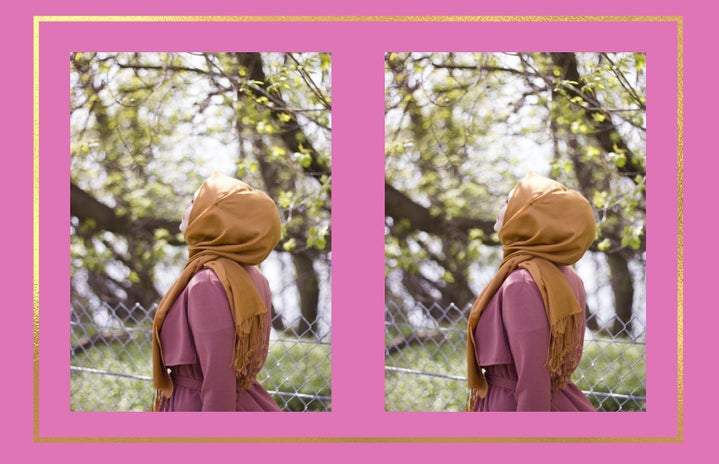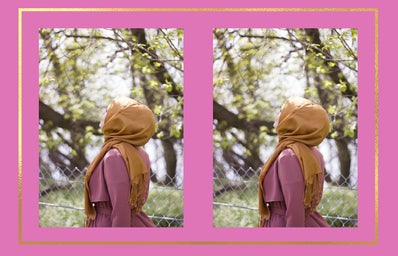Four years ago, Saara Asif began wearing the hijab, an Islamic dress code that promotes modesty and often includes a veil to cover a woman’s hair. At 22 years old, Asif had developed a style she was comfortable with yet she struggled to find clothes that would be fashionable and appropriate for her hijab. “I was trying to figure out how to blend in [the hijab] with the usual style that I carry,” Asif recalls. “I didn’t want to stand out in the environment that I already was in at work and at college.”
During her many years of searching, Asif said it was rare to find a wearable outfit in mainstream stores. “I would always look out for something that blends into the current fashion but wouldn’t be immodest,” she said. She remembers ransacking brands like Forever 21, H&M and Zara for trendy yet modest items… but there weren’t any.
“You’d find a really nice maxi dress, but it’s very deep-necked… Or the length stops a few inches above the ankle, and then you have to wear leggings,” Asif said. Layering to make the outfits more modest was not a viable option in hot weather conditions, like where Asif lives in Mumbai, India.
After witnessing the challenge of finding chic and modest clothes, Asif’s husband wondered what they could do to bridge this gap in the market. The couple decided to start an online clothing store called Modest Essentials. The store offers dresses, jackets, sweatsuits and other modern modest clothing. The store also sells more traditional modest clothing, such as hijabs (the actual head covering), abayas (a type of long dress), niqabs (a partial face veil) and jilbabs (a type of long outer garment).
Modest Essentials has been incredibly successful in India, which Asif attributes to their first product idea: A dress that is classy and stylish, but still perfect for women who wear hijabs (otherwise known as hijabis). “Once in a blue moon, when you get lucky, you find one good dress that has it all,” Asif said. “We tried making something like that one dress, which I thought was perfect.”
Asif believes that social media has a huge part to play in their success. The brand’s Instagram account has over 100,000 followers on Instagram, at the time this article was written, and is steadily growing every day. Asif says that social media has opened up a new sense of fashion inspiration for women who want to dress fashionable and modestly. “People did not have any options,” Asif said. “And because they didn’t know that they had an option, they just stuck to what was convenient.”
With the rise of social media, more people around the world have been introduced to the concept of modest fashion. Modest fashion is often attributed to female Muslim influencers, although it has now expanded to people of all beliefs and identities. The main purpose behind the modest fashion movement on social media is to integrate principles of modesty into everyday life without sacrificing fashion trends and style. Modest fashion has thrived because of online platforms, where female Muslim influencers are able to challenge stereotypes and build global communities of like-minded women.
Influencers challenge stereotypes
Fitness influencer Zehra Allibhai first started an Instagram account to keep in touch with friends and family who didn’t live near her. As a kinesiology graduate who loved being physically active, she often posted pictures of herself working out. Her public account began to grow and she began receiving messages from women who were surprised to see a hijabi interested in fitness. Allibhai said, “People were finding me from all over the world or saying, ‘It’s so nice to see someone who looks like me that gives me the courage to go out running wearing my hijab.’” She added, “I realized that there was definitely a need within the Muslim community.”
She began posting more photos and videos of her exercising, which has led to 243,000 followers on Instagram. Allibhai is now a fitness expert on CityLine and uses her platform to encourage women of all backgrounds, especially busy mothers, to take care of their bodies and be more intentional about fitness.
Allibhai says although she was nervous about posting so much of herself online, she was motivated to use her account to dispel the myth in Muslim communities that women must stop exercising once they started wearing a hijab. “I felt that there was a greater need for people to see past those barriers and maybe have the confidence to do it themselves,” she said. While social media offers Muslim influencers the ability to showcase their modest fashion, they are also given the added pressure of having to define what a Muslim looks like.
Allibhai said she doesn’t let other people’s opinions affect how she presents herself online. Although she is challenging stereotypes simply by existing in an online space, her main goal is to inspire women to exercise. “The point is not the fashion that I’m sharing,” she said, “I wear [a] hijab, and this is how I work out in my hijab.”
Building international communities
In 2018, Abdiya Iman Meddings posted about her spiritual journey online and unintentionally became a hijabi influencer. After an influx of thousands of followers, she received offers to do photoshoots for different hijab and abaya brands. An account she used for fun on the weekends became her full-time job. However, she began to realize that her 20,000 followers, most of whom are Muslim women, were lacking something: A sense of community. Last December, Meddings and her business partner launched Modest Fitness Week, a five-day-long virtual conference about women’s health, ranging from workout classes to seminars on mental wellbeing.
“We saw all these credible Muslim women who were excelling in their fields and we were super inspired by them,” Meddings recalls. After they saw the high levels of interaction and engagement with the conference, they decided to expand into a full brand. “We realized the need for an online fitness platform that was directed at Muslim women in particular and [had] instructors that dressed modestly and that we can relate to.”
What comes next?
Allibhai hopes that as modest fashion and hijabi influencers continue to grow online, mainstream brands will pay more attention to the needs and desires of this audience. “I think these big companies need to listen to hijabis more,” she said. “You want those creators from those communities to be involved in the creation process, right?”
Meddings thinks that social media is the perfect place for modest fashion communities to keep building organically. “It’s natural that social media is growing in all communities,” she said. “In the same way that anyone else is going to share their bikini photo, you’re going to share your burkini photo… It’s normal that Muslim girls and Muslim guys are sharing their fashion sense online.”


